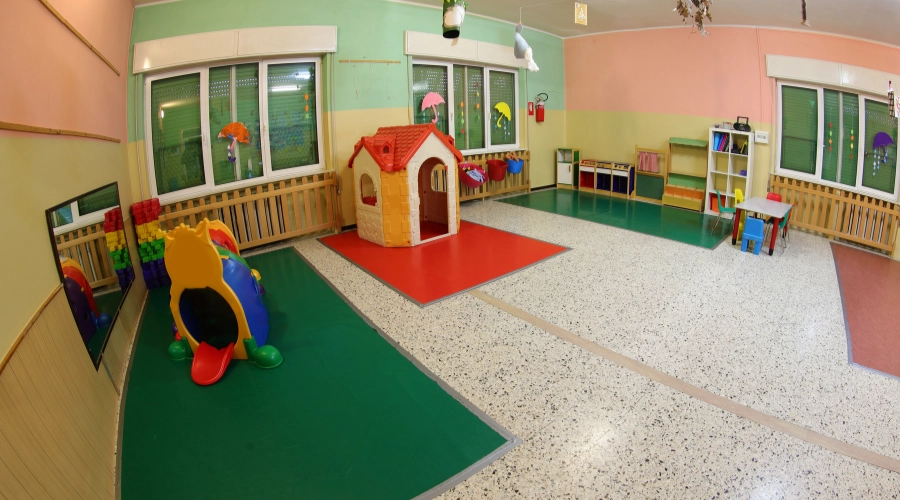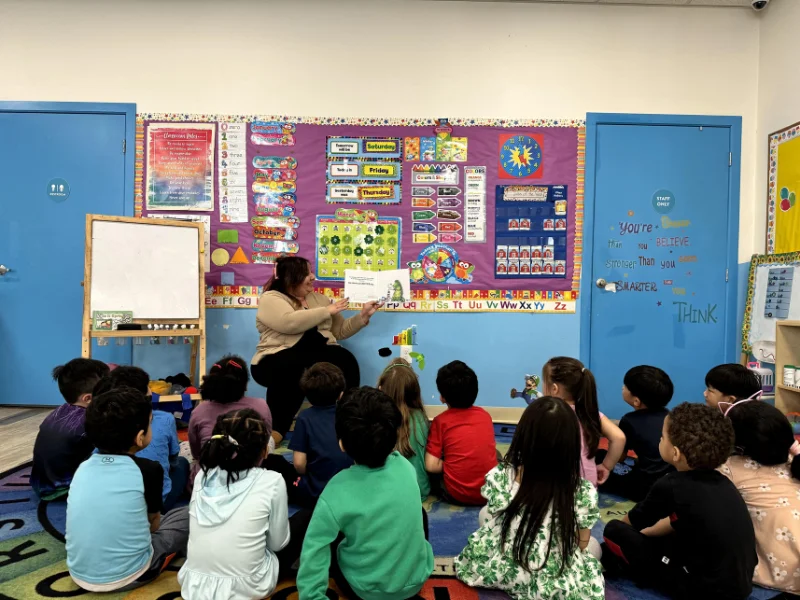Did you know that most Bergen County families are leaving $1,500-$2,500 in childcare savings on the table every year? The average family paying $18,000 annually for daycare could be saving over $2,000 through tax credits and FSA benefits they don’t even know exist.
Just last month, a Paramus family discovered they’d been missing out on $1,800 in annual tax savings for three years. That’s $5,400 they could have kept in their pocket – enough to cover three months of daycare costs.
The problem? Most parents think daycare is just an expense, not realizing it’s actually a tax-advantaged investment in their child’s future.
At Paramus Daycare at Jumpin Jax, we help families maximize every available tax benefit. Here’s your complete guide to turning your daycare costs into substantial tax savings.
The Two Powerhouse Tax Benefits Every Parent Should Know
You have two main ways to save on daycare costs:
- Child and Dependent Care Credit: Direct tax credit up to $1,200 per child
- Dependent Care FSA: Pre-tax savings up to $5,000 annually
The key insight most parents miss: You can often use both strategies, but not for the same expenses. Strategic planning maximizes your total savings.
Child and Dependent Care Credit: Your Direct Tax Reduction
2025 Credit Amounts
The Child and Dependent Care Credit allows you to claim expenses for the care of a qualifying individual to enable you (and your spouse, if filing a joint return) to work or actively look for work.
Credit Calculation:
- Up to $3,000 in expenses for one qualifying child
- Up to $6,000 in expenses for two or more qualifying children
- Credit percentage: 20-35% based on your income
- Maximum credit: $1,200 for one child, $2,400 for multiple children
Who Qualifies for the Credit
You may be eligible to claim the Child and Dependent Care Credit if: You paid expenses for the care of a qualifying individual to enable you (and your spouse, if filing a joint return) to work or actively look for work.
Qualifying Children:
- Under age 13 when care was provided
- Your dependent who lived with you for more than half the year
- Your spouse if incapable of self-care
Qualifying Expenses:
- Summer day camp expenses may count towards the Child and Dependent Care tax credit
- Daycare and preschool costs
- Before and after-school programs
- Babysitting expenses (if you’re working)
Income Limits and Credit Percentages
Your credit percentage depends on your adjusted gross income:
- AGI $15,000 or less: 35% credit rate
- AGI $15,001-$17,000: 34% credit rate
- AGI $17,001-$19,000: 33% credit rate
- AGI $19,001-$21,000: 32% credit rate
- AGI $21,001-$23,000: 31% credit rate
- AGI $23,001-$25,000: 30% credit rate
- AGI $25,001-$27,000: 29% credit rate
- AGI $27,001-$29,000: 28% credit rate
- AGI $29,001-$31,000: 27% credit rate
- AGI $31,001-$33,000: 26% credit rate
- AGI $33,001-$35,000: 25% credit rate
- AGI $35,001-$37,000: 24% credit rate
- AGI $37,001-$39,000: 23% credit rate
- AGI $39,001-$41,000: 22% credit rate
- AGI $41,001-$43,000: 21% credit rate
- AGI $43,001 and above: 20% credit rate
💰 Ready to maximize your daycare tax savings? Our team at Paramus Daycare at Jumpin Jax provides detailed receipts and documentation to help you claim every available credit. Call (201) 500-2951 to learn how we support your tax planning.
Dependent Care FSA: Your Pre-Tax Savings Powerhouse
2025 FSA Contribution Limits
$5,000.00 per year if you are married and file a joint tax return or if you file as single or head of household
Annual Contribution Limits:
- Single or Head of Household: $5,000
- Married Filing Jointly: $5,000 total
- Married Filing Separately: $2,500 each
How FSA Savings Work
The math is compelling: DCAPs allow individuals to use pre-tax dollars to pay for eligible dependent care expenses such as daycare, preschool, and after-school programs.
Example Savings Calculation:
- Annual daycare costs: $18,000
- FSA contribution: $5,000
- Your tax bracket: 24% federal + 7% state + 7.65% FICA
- Tax savings: $5,000 × 38.65% = $1,933 annual savings
FSA Eligible Expenses
What you can pay for with FSA dollars:
- Daycare and preschool tuition
- Before and after-school programs
- Summer day camps (not overnight camps)
- Babysitting expenses while you work
- Adult day care for elderly dependents
What’s NOT eligible:
- Overnight camps
- Kindergarten tuition (educational portion)
- Food costs (unless part of care fee)
- Transportation to and from care
FSA Earned Income Limitations
If you are married, the earned income limitation is the lesser of your salary, excluding contributions to your Dependent Care FSA, or your spouse’s salary
Important rules:
- Your FSA contribution cannot exceed your earned income
- For married couples, contribution limited to lower-earning spouse’s income
- Students and stay-at-home parents may have $0 earned income limits
New Jersey State Tax Benefits
New Jersey Child and Dependent Care Credit
Taxpayers may be able to claim … or actively look for work; Are allowed the federal child and dependent care credit; and · Have New Jersey taxable income of $60,000 or less
Eligibility Requirements:
- Must qualify for federal child and dependent care credit
- New Jersey taxable income of $60,000 or less
- Additional state tax savings on top of federal benefits
New Jersey Child Tax Credit
The credit amount can be up to $1,000 for each dependent child age 5 or younger that is claimed on Form NJ-1040.
Additional Benefits:
- Up to $1,000 per child age 5 or younger
- Reduces tax owed and can increase refund
- Stacks with federal benefits for maximum savings
Strategic Tax Planning: FSA vs. Credit Optimization
The Double-Benefit Strategy
Most families can use both benefits strategically:
Option 1: FSA First Strategy
- Contribute $5,000 to FSA (maximum pre-tax benefit)
- Use remaining eligible expenses for Child and Dependent Care Credit
- Example: $18,000 total costs = $5,000 FSA + $1,000 credit-eligible expenses
Option 2: Credit First Strategy
- Maximize credit on first $3,000-$6,000 of expenses
- Use FSA for remaining costs up to $5,000
- Best for: Lower-income families with higher credit percentages
Calculation Example: Bergen County Family
Family Profile:
- Two children in daycare
- Annual costs: $20,000
- Household income: $85,000
- Tax bracket: 22% federal + 7% state + 7.65% FICA = 36.65%
Optimal Strategy:
- FSA contribution: $5,000
- FSA tax savings: $5,000 × 36.65% = $1,833
- Remaining expenses: $15,000
- Credit-eligible expenses: $6,000 (max for two children)
- Credit amount: $6,000 × 20% = $1,200
- Total annual savings: $1,833 + $1,200 = $3,033
Common Mistakes That Cost You Money
FSA Mistakes to Avoid
Over-contributing based on spouse’s income:
- FSA contributions limited to lower-earning spouse’s income
- Excess contributions become taxable income
Using FSA and credit for same expenses:
- IRS prohibits double-dipping on the same costs
- Keep detailed records separating FSA and credit expenses
Forgetting the “use it or lose it” rule:
- Most FSA plans have limited carryover options
- Plan contributions carefully based on actual expenses
Credit Mistakes to Avoid
Claiming ineligible expenses:
- Overnight camps don’t qualify
- Educational costs beyond care don’t qualify
- Keep detailed records of care vs. education expenses
Missing required documentation:
- Must have provider’s tax ID number
- Need detailed receipts showing care vs. other services
- Maintain employment records proving work-related need
Documentation and Record-Keeping
Essential Documents You Need
For FSA Claims:
- Detailed invoices showing care services
- Provider tax identification numbers
- Proof of payment (canceled checks, credit card statements)
- Employment verification showing work-related need
For Tax Credit Claims:
- Form 2441 (Child and Dependent Care Expenses)
- Provider information and tax ID numbers
- Detailed expense records by child and time period
- Income documentation for credit percentage calculation
Best Practices for Record-Keeping
Monthly Documentation:
- Save all daycare invoices immediately
- Create monthly expense summaries
- Track FSA reimbursements separately from credit expenses
- Maintain employment records showing work necessity
Year-End Preparation:
- Request detailed annual statements from providers
- Organize expenses by child and expense type
- Calculate optimal FSA vs. credit allocation
- Prepare supporting documentation for tax filing
How Paramus Daycare at Jumpin Jax Supports Your Tax Planning
Documentation We Provide
Comprehensive tax support:
- Detailed monthly invoices with clear expense breakdowns
- Annual tax summary statements
- Provider tax identification numbers
- Separation of care costs from optional services
Year-round support:
- Monthly expense tracking assistance
- FSA reimbursement documentation
- Tax credit calculation guidance
- Referrals to qualified tax professionals
Our Transparent Billing Helps Your Tax Planning
Clear expense categories:
- Core childcare services (FSA and credit eligible)
- Optional activities (may have different tax treatment)
- Meal programs (separate billing for tax purposes)
- Supply fees (clearly documented for tax compliance)
Advanced Tax Strategies for High-Income Families
When FSA Makes More Sense Than Credits
High-income families (AGI over $43,000):
- Child and Dependent Care Credit limited to 20%
- FSA provides higher savings rate (your tax bracket)
- Focus on maximizing FSA contribution
Multi-Child Strategies
Families with multiple children:
- Credit covers up to $6,000 in expenses for two or more children
- FSA covers up to $5,000 regardless of number of children
- Strategic allocation maximizes both benefits
State-Specific Planning
New Jersey residents:
- Layer state credits on top of federal benefits
- Consider state income limits for additional credits
- Factor state tax savings into FSA calculation
Take Action: Start Maximizing Your Daycare Tax Savings
Don’t let another year pass without claiming your full tax benefits. The average Bergen County family can save $2,000-$3,000 annually through proper tax planning.
Your next steps:
- Calculate your potential savings using the strategies outlined above
- Enroll in FSA during open enrollment (typically November-December)
- Keep detailed records of all childcare expenses
- Consult with a tax professional for personalized optimization
Get Expert Support at Paramus Daycare at Jumpin Jax
We make your tax planning easier:
- Detailed documentation for all tax benefits
- Monthly expense tracking support
- Annual tax summary statements
- Guidance on FSA vs. credit optimization
Start maximizing your savings today:
- Call: (201) 500-2951 for tax planning guidance
- Visit: paramusdaycare.com for detailed billing information
- Schedule: Your consultation to discuss tax-efficient childcare planning
Additional Resources:
- IRS Child and Dependent Care Credit: IRS.gov Child Care Credit Information
- FSA Guidelines: FSAFEDS.gov Dependent Care FSA
- New Jersey State Credits: NJ.gov Child and Dependent Care Credit
- IRS Publication 503: Child and Dependent Care Expenses
Don’t wait until tax season to start planning. The families who save the most start their tax strategy when they choose their daycare provider.
Choose Paramus Daycare at Jumpin Jax – where quality care meets smart tax planning.






